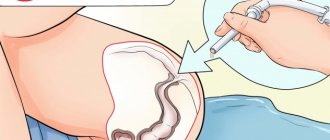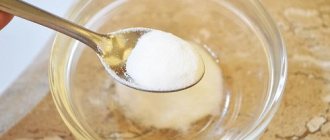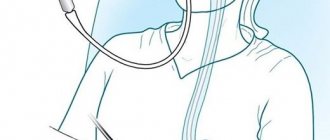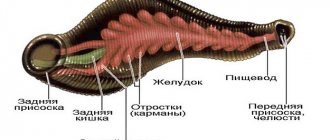home
/
Articles
/
How to give yourself an enema if you are constipated?
A cleansing enema is a useful procedure that will help a person improve his condition quickly enough, without resorting to any medicinal methods. Enemas are in demand both among people with regular bowel retention and among those who are actively dieting, because the process ensures cleansing of the intestines from toxins.
However, the benefits of rectal lavage are observed only when a person does everything correctly. How to give an enema yourself? Is this real or will I have to turn to professionals? Our article will tell you everything.
When should an enema be used?
Cleansing the intestines may be necessary both to prepare for further medical procedures and to facilitate the act of defecation. Among the main indications for performing an enema:
- prolonged constipation (3 or more days);
- preparation for x-rays of the gastrointestinal tract, pelvic organs - urinary and reproductive systems;
- preparation for rectal endoscopy;
- immediately before birth;
- preparation for any abdominal operations;
- preparation before a visit to the proctologist.
It is recommended to rinse the rectum before administering a medicinal or vitamin enema to ensure good absorption of drugs and microelements.
Patients are often interested in how to perform an enema themselves, so that they do not have to call a specialist or go to the hospital. But in some cases, you cannot do without consulting a doctor, because even such a useful procedure as rectal lavage has a number of contraindications:
- stomach and intestinal bleeding;
- hemorrhoids and anal fissures;
- colon cancer;
- prolapse;
- the first 5 days after surgery on the gastrointestinal tract.
If you are not sure that a cleansing enema is safe for you, it is better to postpone the procedure until a professional arrives. By calling MedInHome specialists, you ensure that any manipulations are carried out at the highest level. In addition, all services are anonymous - only you and he will know about the doctor’s visit.
Indications and contraindications for using an enema
Enemas should not be used frequently.
The inability to independently perform an act of defecation, the discomfort endured by the baby, crying, complaints of abdominal pain in combination with stool retention give grounds for using an enema.
This remedy should not be used regularly. An enema for constipation in children is given when alternative measures have already been exhausted, and the effect has still not occurred. Possible consequences of regular use of an enema:
- the intestines become “lazy”, its peristalsis weakens;
- beneficial microflora, bifidobacteria and lactobacilli, which are responsible for normalizing digestion, are washed away;
- imbalance;
- microflora leads to decreased immunity.
If an enema is given without consulting a doctor, there is a risk of missing dangerous diseases and conditions and aggravating an already difficult situation. Absolute contraindications for enema:
- painful procedure;
- rectal prolapse;
- suspicion of appendicitis, peritonitis.
An enema is given to children with constipation if the parents are fully confident that there are no contraindications. In addition to constipation, it is also used in preparation for a diagnostic examination of the gastrointestinal tract.
What types of enemas are there?
According to the final purpose of application, a number of procedures are distinguished:
- cleansing enema - used for intestinal obstruction and severe constipation, as well as for the purpose of detoxifying the body after food poisoning (the injected solution must be excreted along with the feces);
- therapeutic enema - small-volume rinsing (usually up to 100 ml), when solutions of medicinal substances, plant decoctions and biologically active preparations are introduced into the intestine (kept inside for up to half an hour, usually must be absorbed);
- vitamin enema - administration of vitamin solutions when oral administration does not achieve the desired effect;
- nutritional enema is a procedure for seriously ill patients; a solution in a volume of up to 1 liter is administered dropwise, followed by absorption by the intestinal walls.
If we classify the procedure according to the amount of fluid administered, then we distinguish:
- Microclysters are a small volume, usually 5-100 ml of some medicinal solution.
- Standard enemas for rinsing - the volume of liquid ranges from 1 to 2 liters.
- Siphon enemas provide cleansing not only of the rectum, but of the entire intestine as a whole. The total volume of injected liquid can exceed 15 liters, but the solution is not poured in immediately, but in parts. During breaks, the patient empties.
When thinking about how to give an enema to yourself, patients usually stop at rinsing with water. We have already talked about another group, medicinal enemas, but there are also solutions with different compositions:
- soap enemas - relevant for constipation, as the liquid activates intestinal motility and stimulates the waste of feces;
- glycerin enemas - similar to soap enemas, have a good effect on peristalsis;
- salt enemas - also called hypertonic, when the patient is injected with a solution of table salt and magnesium;
- oil enemas - the procedure is performed using organic oils, usually as a protection for the intestinal mucosa before other types of manipulation.
There are also soda and sour enemas, and in the past, surgeons used “fire” enemas - a mixture of glycerin, hydrogen peroxide and soapy water, which helped to start the intestines even in a patient with complete atony.
For some helminthic infections, an oxygen enema is used, when a small amount of air enriched with oxygen is pumped into the patient’s rectum. Some types of parasites cannot tolerate high concentrations of oxygen, which is why helminthiasis is eliminated in this way.
And, of course, enemas differ in the temperature of the injected liquid:
- cold (from zero to room temperature);
- cool (23-26 degrees);
- warm (corresponding to the temperature in the rectum - approximately 37.1-37.5);
- hot (from 40 to 43 degrees, above 45 is prohibited, as this can cause a thermal burn to the surface of the mucous membrane).
Compositions for enema and fluid norms
Enema water should be at room temperature.
This procedure is done using boiled water slightly warmer than room temperature. Cold liquid provokes intestinal spasms; very warm water will be actively absorbed through the intestinal walls, carrying with it toxins from the stool.
The optimal water temperature is +26+30? C. An enema will be more effective if you add glycerin to the water (1-2 tsp per liter of water), or make it with chamomile decoction. You can use a soap solution from a small piece of baby soap.
How to give an enema correctly?
It is important to understand that each type of enema implies certain rules of use.
Regular "pear"
Probably everyone has the simplest rubber bulb. It is the one that is most often used for cleansing the rectum. The procedure is carried out in the bathroom for greater convenience. What do we have to do?
- Prepare the water: boil and cool to room temperature, maybe a little warmer, around 37-38 degrees.
- Wash and dry the pear. Fill it with water, lubricate the tip with Vaseline and gently insert it into the anus.
- The strength of the jet and the speed of liquid injection can be adjusted independently.
- Once the contents have been completely inserted, you should wait a few minutes and then empty.
- Continue manipulations until absolutely clean water comes out of the rectum.
Very often, pregnant patients want to cleanse the intestines themselves after their water has broken, as they are embarrassed to carry out the procedure in the hospital. In such a situation, you should not panicky search on the Internet how to give an enema yourself, because it is much more important to get to the doctor on time and get ready for childbirth than to waste time on any independent procedures - especially since colon lavage is not always necessary for pregnant women.
Classic method with Esmarch mug
Esmarch's mug is a more complicated version of the enema, more often it is used directly in medical institutions. However, the device is on the market, so many patients who regularly suffer from constipation buy it for themselves.
So, how to give an enema yourself using an Esmarch mug? Special educational video from a medical school
There is also a short guide:
- Prepare the water in the same way as with a rubber bulb.
- Fill the mug with boiled and cooled water, and then hang it at a height of about 1 meter.
- Drain some water to release any air in the spout.
- The tip should be lubricated with Vaseline or oil (only vegetable oil is allowed).
- Spread a strong oilcloth on the bed and place a basin next to it. The edge of the oilcloth should hang over the basin in case the patient is unable to retain water.
- You need to lie on your left side and pull your knees to your chest. Gently spread the buttocks and, using rotational movements, insert the lubricated tip into the rectum to a depth of 6-7 cm.
- Turn the tap on the tip. The degree of unscrewing regulates the speed of incoming water.
- Keep track of the amount of water in the mug. It is necessary to close the tap before all the liquid has flowed out, so that air does not enter the intestines.
- When the procedure is completed, remove the tip and lie down for 20 minutes, then you can void.
- An hour after the first manipulation, a second one is performed if the desired result is not achieved.
Modification of Esmarch's method according to Hegar
For this method you will also need an Esmarch mug, but now it is better to carry out the procedure in the bathroom. Stages of intestinal lavage:
- Hang a mug of water and check that there is no air in the spout.
- Lubricate the tip with Vaseline or oil.
- Take a pose on all fours so that your body rests on two knees and one elbow - with your other hand you will control the unscrewing of the tap.
- Insert the tip into the rectum to a depth of 6-7 cm.
- Turn on the water supply, lower your head and shoulders down, and watch your breathing. You need to inhale through your nose and exhale through your mouth - slowly and rhythmically.
- Once all the liquid is in the intestines, close the tap and remove the tip.
- It is more difficult to retain water than with the previous method, so it is recommended to wait no more than 10 minutes. The easiest way to spend this period of time is lying on your back; the urge is less pronounced.
- After defecation, at least 40 minutes must pass before repeating the procedure.
All three methods, when performed correctly, should not cause pain or discomfort.
Preventing constipation in older people
To prevent constipation in older people, you usually need to carefully monitor your diet, drinking habits, as well as exercise and breathing exercises. The simplest laxative against constipation for older people is fiber - dietary fiber, which is found in many foods: fresh vegetables and fruits, bran, whole grain bread, etc. Water dilutes stool and makes bowel movements easier. Maintaining muscle tone also helps prevent deterioration of intestinal motility.
Up to contents
Reviews from doctors about the procedure
Performing a cleansing enema is what doctors advise for long-term constipation. Of course, you will have to spend a little time figuring out how to give an enema yourself, but the result will be worth it.
Vladimir Pavlovich Kiriyenko, proctologist: “Timely lavage of the intestines quickly improves the condition of patients - there is no point in dragging on to the point of fainting. In addition, when performing manipulations at home, either independently or with the help of calling a doctor, patients do not experience such embarrassment as in the hospital.”
Doctors remind us of the importance of consulting with a professional: the patient does not always know that he has contraindications to the procedure.
According to surgeon A. Markovskaya: “The main obstacle to independent intestinal lavage is ignorance of the optimal volume and temperature of the administered fluid. It is very easy to harm yourself, so avoid self-medication as much as possible. Moreover, nowadays it is very easy to call a specialist to your home.”
Causes of prolonged constipation
There are several reasons for the development of persistent constipation. The most common is poor nutrition, namely a lack of dietary fiber and a predominance of refined foods.
Professor Livkin V.L. believes that “a common cause of the development of chronic disease is a change in the intestinal microflora due to disruption of the production of specific substances by representatives of the normal flora of the colon that promote the formation of stool and support optimal motor activity of the colon” (Livkin, 2013, p. 78).
Long-term constipation in adults can be caused by other factors:
- physical inactivity;
- violation of the water regime;
- intestinal dysbiosis;
- endocrine diseases;
- tumors of the digestive system;
- inflammatory diseases of the gastrointestinal tract;
- proctological diseases;
- neurological diseases.
Also, stool retention may be associated with taking medications. Drugs that can cause constipation as a side effect include drugs to normalize blood pressure and heart rate, antibacterial drugs, hormonal drugs, antiepileptic drugs, diuretics, tranquilizers, iron supplements and others.
By type of reason
Depending on the causes of frequent constipation, they are classified into several types:
- alimentary or nutrition-related;
- neurogenic;
- proctogenic;
- dyskinetic;
- hypodynamic;
- psychogenic;
- medicinal.
The head of the department of gastroenterology of the State Healthcare Institution ROCH Babieva A.M. and other authors believe that “constipation in 80–90% of cases is of a functional nature, the rest is caused by reasons of an organic nature” (Babieva A.M., Bogatyrev V.G., Marinchuk A. T., Koumbatiadis D. G., 2012, p. 53).
By gender and age
Gender and age act as risk factors for the development of long-term constipation. In women, this disorder of intestinal function is more common, developing, among other things, during pregnancy and after childbirth.
According to various sources, up to 60–80% of people over 60 years of age suffer from constipation, which may be due to disturbances in the transmission of nerve impulses, overstretching of the intestinal walls, developed proctological diseases, a sedentary lifestyle and other factors.
Get rid of intestinal problems
The natural British drug is not addictive and works immediately
Find Fitomucil with benefits
Patient reviews
Patients themselves also often write on forums about their experience of using enemas - some use regular water enemas, some buy special ones with a solution (for example, Enema), while others call a specialist and choose the optimal composition of the liquid with him.
Maria, 25 years old, had her bowel lavaged before going for an endoscopy: “It’s the hardest thing to cleanse yourself properly, you’re always afraid of doing something wrong. She called the nurse and was even surprised that the enema was administered without discomfort. Fast and no problems, I recommend.”
Andrey D. shared another experience, a little less pleasant: “I had to give an enema before a visit to the proctologist, but for me it was the first experience of such a procedure - as a result, a lot of unpleasant sensations and damage to the mucous membrane. The doctor said that coming “unprepared” is not critical, it’s better not to harm the body and ask a specialist for help.”
Christina N. says: “For a couple of years now, my grandmother has been bedridden and moves little—hence the problems with stool. Recently we tried to give an enema with the help of a nurse, the result was excellent, I calmly emptied after half an hour. It’s a good method, and there’s no need to poison an elderly person with laxatives, she already has a lot of pills.”
From their impressions it is clear: constipation cannot always be prevented, because it appears from stress, from travel, and from unusual cuisine. An enema is a simple and affordable way to cleanse the intestines, so there are a lot of positive reviews.
What can you do before the enema?
For constipation, you can use glycerin suppositories.
If constipation in children does not cause significant discomfort and there is no need to take urgent measures to eliminate it, you can try to do without an enema.
For example, constipation due to dysbiosis can be gently eliminated with prebiotics and probiotics carefully selected by a doctor.











